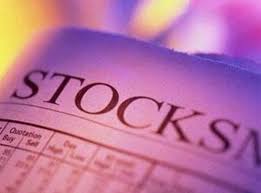Why Sears Stock Price Is Plunging

Sears is in a world of trouble, and it looks like its finally time for investors to give up on the struggling retailer.
Shares of Sears Holdings, which also owns the floundering Kmart, tumbled more than 15% to $ 7.70 in midday trading Wednesday after the company revealed in an annual shareholder report Tuesday that it had substantial doubt about its ability to survive.
Fears about the company’s future are nothing new. Sales have been lagging for years and have caused Sears to hemorrhage huge amounts of money. Since 2011, the company has lost $ 8.2 billion as it experienced a nearly $ 40 billion drop in sales.
In order to stay afloat, Sears has raised $ 12 billion since 2012 by selling off real estate and spinning off assets such as Lands’ End and Sears Canada. The company most recently sold Craftsman to Black and Decker for $ 900 million in January, but in its shareholder filing Sears revealed that the deal can be voided if it was insolvent either during or as a result of the transaction. Other deals, including the Lands’ End spin off, could also be invalidated, which would likely amount to a deathblow to a company that can’t seem to find revenue anywhere else. Even if the deals end up standing, Sears is running out of assets to sell and brands to spin off.
Although other retailers are struggling as they try to find ways to fight of dwindling sales figures and competition from the internet, Sears’ situation is the most dire. While Macy’s (m) has seen its stock price drop more than 58% since June 2015 and the much-maligned J.C. Penney (jcp) has fallen 37% over the same time frame, shares of Sears have fallen more than 82% since then. It has been a long plunge. Shares of Sears (shld) once fetch $ 162 back in October 2006.
The stock values of Macy’s and J.C. Penney, which stand at $ 28.08 and $ 5.51, respectively, are higher than their book values, which means they are currently over valued on paper. Macy’s’ book value per share sits at $ 14.22, while J.C. Penney’s $ 4.39 book value is more in line with its actual price. By contrast, Sears’ book value is a staggering -$ 35.71. It’s pretty hard to justify buying into a company with such terrible figures and no real plan to raise money aside from selling its most valuable assets and hoping for the best.
A final thing to consider is that aside from the equities side of things, a large swath of Wall Street doesn’t seem to think there’s much left in the tank for Sears. Last month, the price to insure $ 10 million of Sears bonds against default for the next five years rose to $ 4.6 million a year, according to research firm IHS Markit. The extremely high premium means that holding the credit derivative for a little more than two years will actually cost more money than the principle is worth, which indicates that the bond market expects Sears to default in two years.
But today the stock market seems to be indicating it could be even sooner than that.








